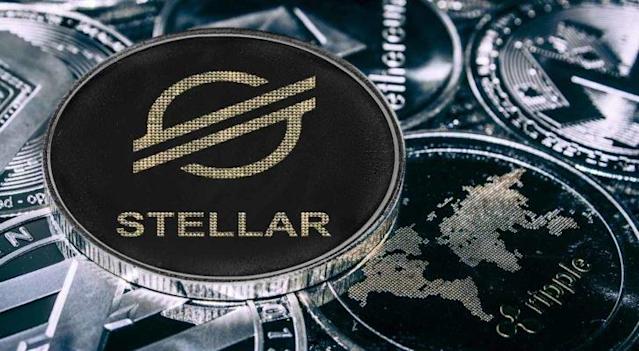So as you’ve probably heard because the media can’t shut up about it in 2017, the Ripple currency otherwise known as XRP shot up in value across the year by 30,000%. A lot of that just being in the last couple of weeks. A lot of this was being driven by a rumor that was going around the space about Ripple potentially being added to the Coinbase app. I actually heard about this rumor a couple of months ago and there was some fake screenshots and videos going around which easily could have been put together in Photoshop or something like that.
But you can never discount the power of a rumor and the speculative money people are willing to gamble on something. So what we’ve seen over the last couple of weeks is the price shoot through the roof. As with all things in cryptocurrency though speculative price increases do not equal utility and that’s why I wanted to talk a little bit today about what Ripple is and why it’s not really decentralized at all.
What is Ripple?
Ripple was created many, many years ago and I’m not gonna tell the full history story but it was created by somebody called Jed McCaleb who is actually the person who created Mt. Gox. But he then sold it to Mark Karpeles before all that bad stuff happened. Then after Ripple, he went on to create something called Stellar which is another cryptocurrency. Ripple has been around for a long time and it’s always kind of hovered in the top 10 cryptocurrencies but people haven’t really known what to make of it. That’s because Ripple mostly targets its marketing towards banks and big financial institutions rather than the small guys.

So historically, the people who were against the banks and against financial institutions I.e. the people that created BitCoin they didn’t want any part in Ripple because they didn’t want to side with these people who created the economic crash. But speculation from uneducated investors strikes again. So the reason you’ll hear some people screaming Ripple isn’t decentralized is the fact that Ripple actually only relies on around 55 validator nodes and these validator notes, a lot of them belong to Ripple themselves they just service somewhere but a lot of them belong to banks and exchanges which Ripple, the company, has partnered with. Most of these people are gateways in the Ripple network and it’s important to know that XRP which is the currency that is traded on Ripple it’s the base currency is just one of the things you can trade on Ripple.
Ripple is actually supposed to be rails for these financial institutions and what that means in a nutshell is that Ripple is designed to be a new technology stack for banks and financial institutions to trade assets, whatever they may be. They may be USD or Euros just faster between one another. So basically these 55-ish validator nodes they tell each other about all the transactions that are happening on their independent gateways and then if they all agree with one another they keep moving the ledger forward and forward and forward. As long as they agree on everything, it’s all peachy but this is really easy to pull off when there’s only 55 validator nodes in the world especially if like half of them are owned by one company.
Just to put it in contrast, Ethereum has over 29,000 full nodes validating and BitCoin has around 12,000. On top of that, Ethereum and BitCoin also have the proof of work mining which secures the ledger. To further compound things, the Stellar protocol which I mentioned earlier. they actually started out as a fork of Ripple they just forked the code base and changed everything a little bit but shortly after releasing, they actually discovered that there were problems in the Ripple protocol which amounted to them saying Ripple isn’t secure as a consensus protocol above one node. So there’s actually a chance that these 55 validator nodes the banks and the exchanges out there are all just playing by the rules and the protocol actually hasn’t been tested at scale when a bad actor comes into the scene.
The thing is, it’s only these big companies that are invited to run these validator nodes so we’ll never really know if there was 1,000 nodes tomorrow by just regular people running them whether the network protocol and consensus would actually work. Stellar actually had to completely re-architect and redo their consensus protocol which is now called the Stellar consensus protocol. I might cover that in the future but basically, it’s a practical byzantine fault tolerant consensus protocol and it’s a lot more resilient against consensus attacks. But let’s say we forget the consensus protocol stuff which we shouldn’t, but let’s say we do.
Even if you look at the Ripple money supply that XRP token, the Ripple company themselves and their partners own over 50% of the money supply. That means that they essentially control the market and I don’t think you have to be an economist to know it’s bad when a single company owns 50% of the money supply. Because there was never any mining in Ripple it was essentially all pre-mined and sent to the company themselves and they were then able to sell it and distribute it to people as they saw fit. But on top of this, and this is kind of the real kicker. The Ripple protocol actually has something in it called a freeze function and what this essentially does is it allows gateways to freeze your account just like a regular bank can freeze your account. So if one of these gateways doesn’t like what you’re doing they can then freeze all your funds which doesn’t really sound that decentralized or trustless to me.
I think it’s really important to understand these essentials about what Ripple is. I’m not necessarily down on Ripple its just not what I would deem as a cryptocurrency or something that extends the original vision of Satoshi and BitCoin. That original vision was about doing away with the banks and making sure that people had control over their own money. They wanted to get away from centralization they wanted to decentralize and make it so that one big company couldn’t freeze your account or control the whole money supply.
Like I said, I’m not necessarily down on Ripple it’s a company and software and they can do what they want but I think a lot of the people that are pouring their money into the thing right now are just simply uneducated about what the thing is. It’s either that or it is the cryptocurrency people have just said, you know what? We don’t care about decentralization or trustless consensus any more. We’re all in on this centralized thing. In a way, putting your money into XRP is like just putting your money into a Venmo account because there’s a lot of trust in the people running the network involved.
The only difference is people go and tell their friends and family, buy this XRP thing and you’re gonna get rich and it artificially drives the price up. It’s literally the definition of a speculative bubble. If you remember, I said that this whole kind of sparked off because of a rumor that Coinbase were gonna add Ripple to their app. In the last couple of days, Coinbase have come out and said, we’re not adding any new assets that was just a rumor.
So the price of Ripple quickly crashed 20% who knows what it’s doing now, I haven’t really checked. Ultimately, I hope this is just a case of people not being educated and they’re gonna go out there and endeavor to become more educated about this stuff. People just throwing their money at things without really knowing what they are and I just think it’s a sad state of affairs if that’s what cryptocurrency has become. People just putting their money into something regardless of the technical background of the thing.
Why is Ethereum so slow?
So moving on, Ethereum, we’ve seen its price also go up with the market over the last couple of weeks I think it’s hovering at around $1,000 right now. But this increase in price coupled with the fact that there’s severe scaling issues with the Ethereum protocol has meant that the network is really suffering and it costs a lot of money to send Ethereum to anybody right now. Just sending Ethereum to somebody right now will cost around $2 or $3 and if you’re trying to interact with ERC-20 tokens those tokens that ICO’s use, it’s gonna cost more than that.
And then you’ve got to wait for the backlog of these transactions to get picked up by miners which is taking even longer and what it ultimately results in is that token exchanges can take hours if not days to process. This is a really big problem especially for exchanges who have to deal with people withdrawing their money and the exchanges have to set the fees accordingly. In addition, when people are trying to deposit into exchanges they’re obviously getting a lot of support emails saying hey I sent this token two days ago, where is it? And it’s not really the exchanges fault at all it’s the Ethereum network itself. As a result, we’ve actually seen some exchanges such as Bittrex holt the creation of new deposit addresses on their exchange.

So if you’re a new user, you basically can’t use Bittrex for anything Ethereum or ERC related. Ethereum scaling is a really big challenge and I’m not sure that something like payment channels is really a silver bullet that’s gonna solve all of this. As per our previous cryptocurrency weekly video I was talking about how fees are another big problem that we need to address. With payment channels, you have to open and close them so those fees aren’t gonna go away. As the price hikes up and up and up these fees are gonna go up as well because the fiat price that people are exchanging for goes up.
So what might have been a 20 cent fee a couple of weeks ago might now be $1 fee. I don’t have a good solutio to this problem but I’m sure somebody out there is working on it. On the topic of exchanges we’ve seen in the last couple of weeks exchanges picking up the pace at which they’re delisting certain ERC-20 tokens on their platforms. They have a variety of reasons they deem for delisting a token. It used to be just about transaction volume and if enough people weren’t really trading the thing they would de-list it. But these days, there’s a whole bunch of other fears that the exchange’s have about whether the thing might be deemed as a security in the future which could put the exchange in hot water.
Just yesterday, several tokens were announced to be de-listed from Bittrex including some pretty big ones that people have been excited about and people are starting to freak out about whether the tokens that they hold could just be de-listed tomorrow. The general rule of thumb here and this is not legal financial advice at all. I think if the token can be redeemed for a tangible good or service then it’s kind of safe because just like you were sold an Amazon gift voucher which you can then redeem for something. If there isn’t a working platform or good or service you can redeem that for and the token’s only use is to send between one another with no real purpose then that’s a little worrying.
ICO tokens being delisted?
I actually think we’re gonna see a lot more of this behavior over the next couple of months with exchanges de-listing tokens they’re just not sure about and their lawyers might be freaking out about. I think we’ll start seeing regulatory bodies start coming down on these ICO’s that have launched over the past 12 months and kind of setting a case and a precedent that they’ll then use moving forward.
This puts exchanges in a really hard spot because they don’t want to be doing anything illegal so I think their lawyers are probably going to tell them to take the safest bet which is de-listing anything that isn’t 100% legit. I called this out a while ago on a previous video but I think the first half of this year, 2018 is gonna be really interesting when we start seeing the cookie kind of crumble because we’re at a point where a lot of these ICO‘s from last year are failing to deliver on their roadmaps and also, the regulatory bodies had time to do their homework and kind of take stock of everything that’s happened. It’s really just a watch this space for now but it’s gonna be interesting and I’ll keep you all up to date with it through these videos.
Now I know you’re probably thinking Jackson, do another technical video I want to promise there are more coming. I’m probably gonna be doing a video around just byzantine fault tolerant protocols such as Stellar and also videos around things like Iota, Cardano things that these new cutting-edge technologies which people seem interested in. I also want to do a Mimblewimble video because it sounds cool but it’s also very cool technology. So that’s it for today. I hope you found this video helpful. If you did, please subscribe and you’ll get weekly updates just like this. If you learnt something from this video or just brought you up to date please click that like button, it really helps. Until next time, thanks for watching. See you later.








